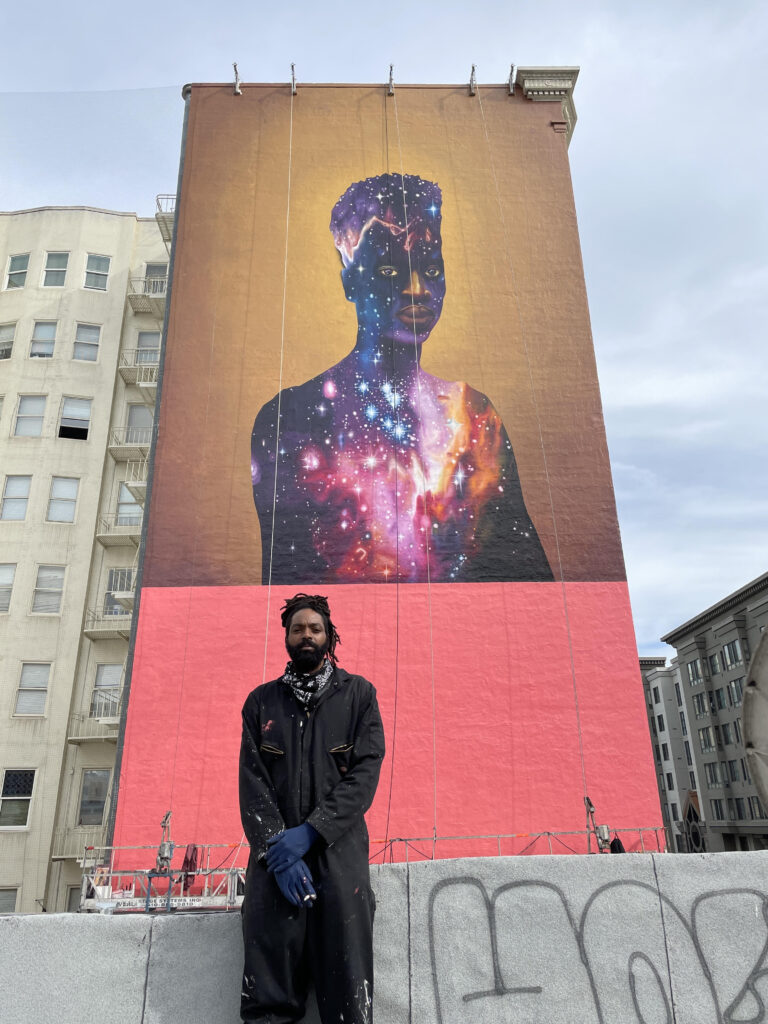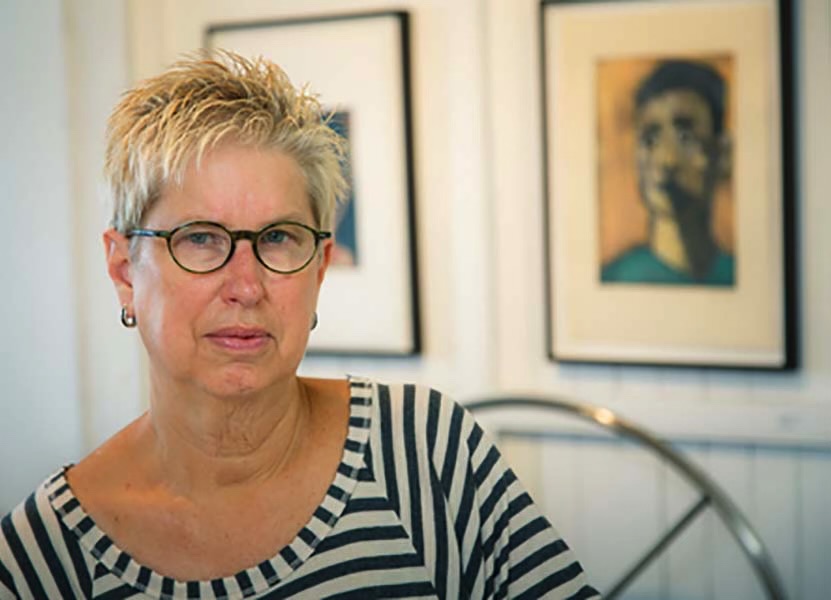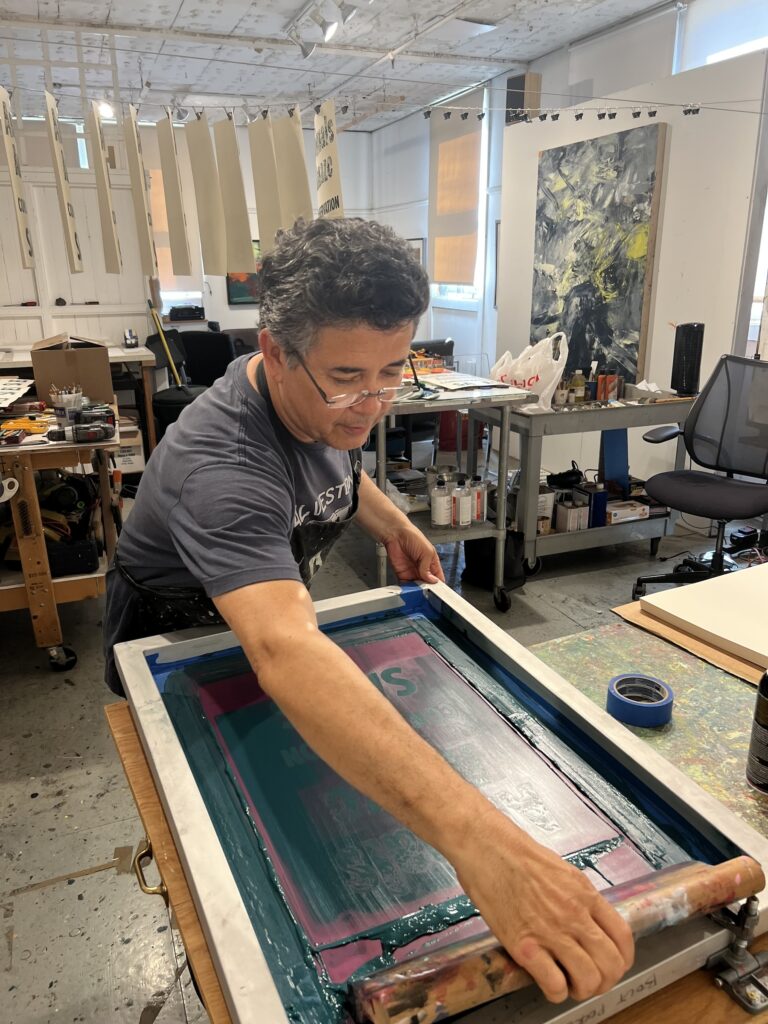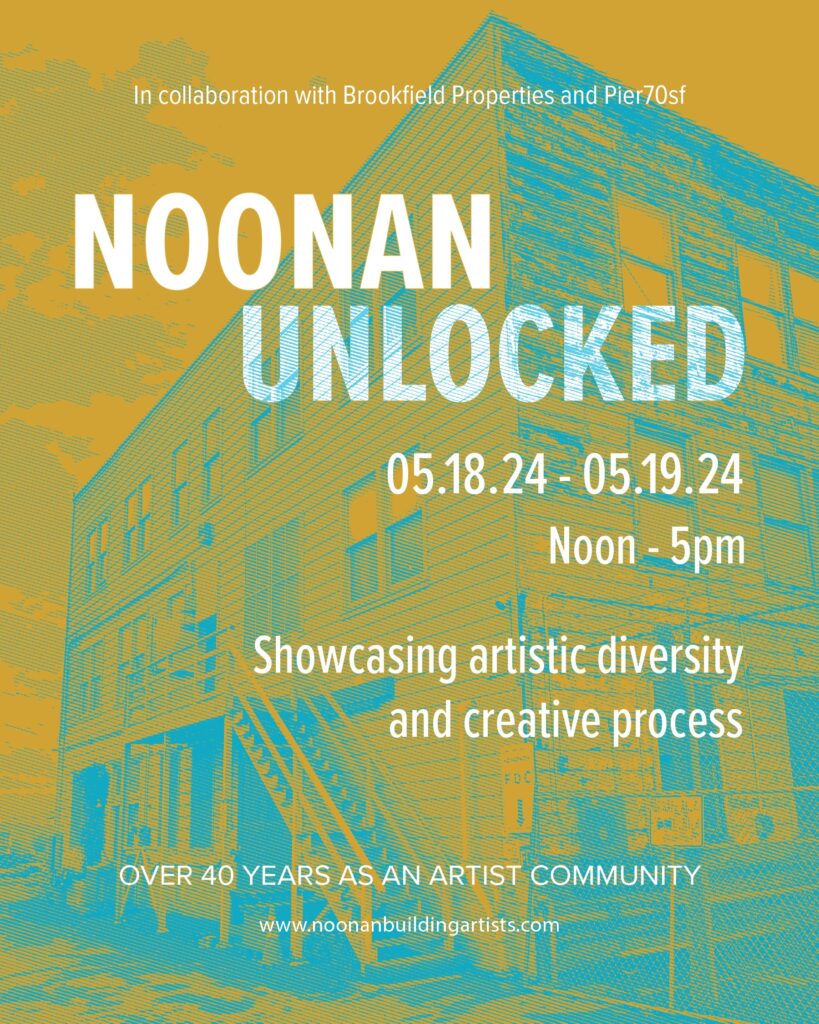COVID cut off artist Christopher Burch, who lives in San Francisco’s Mission District, from his Oakland studio, when he was no longer able to commute by BART. Fortunately, through a fellow graduate of the San Francisco Art Institute, he found a studio at Pier 70’s Noonan Building. Starting out in a quarter space in the storied building and then shuffling around a bit, he eventually landed in the large space he now shares with artist Jay Schumann.
Burch calls it one of the best studios he’s ever had, and he’s there almost every day—when he’s not out making murals and public art (such as Jupiter Redding, returned endowed with everything that this world denied them at Turk and Leavenworth Streets).

The weathered, warehouse-like, ever-resilient Noonan—leased from the city in 1982 by car-importer Fred Noonan, who began renting spaces to artists shortly thereafter—has drawn makers like Burch for its opportunities to expand and network. In Oakland, Burch was paying $800 monthly for a basement studio with no windows. He says the Noonan is more reasonable with much more space and light, as well as everything he needs to do his work.
“The thing I love about the Noonan Building is, it’s a fully functional artist studio,” he said. “Full-time artists can do the work they need to do uninterrupted. There are so many restrictions on material usage with other buildings. Some don’t even allow you to use oil paint. For me not to be able to use oil paint—that would kill my career.”
Fri/18 and Sat/19, 12pm-5pm, the space is open to the public for Noonan Unlocked. It’s an event that’s a little different than Open Studios, says Marti McKee, an artist who has been at Noonan since 1997. People who want to sell their art are welcome, she says, but it’s mostly to let interested people see artists’ working spaces. She adds that people using the building have included filmmakers, commercial photographers, and architects, who don’t necessarily have a product to sell to the public.

“The idea is to invite people into a creative space where there are a number of different things taking place,” she said. “It’s just to welcome people in and let them see what we do.”
Like Burch, McKee likes the large windows, the community, and the price at Noonan. McKee had been taking figure painting classes at the late lamented City College campus at Fort Mason, when a teacher of hers mentioned that she had a friend at Noonan who was looking for a share, so McKee moved in in 1997. About 10 years later, McKee retired and took a studio across the hall when it opened up, knowing she would be spending more time there.
When she first rented her studio, there was even less around the area than there is now. “I just love the building,” she said. “When I first got there the closest place to even get coffee was Farley’s [in Portrero Hill]. There was nothing to do there except stare out the window at the view or do your artwork.”

Henry Jackson has been at Noonan almost three decades ever since he came to a friend’s Open Studio at the building in the 80s and instantly knew he wanted to work there.
“I was set to do everything possible to get into the building,” he said. “Even though the setting was by most standards bleak because it was fairly run down and close to edge of water, I think just the history of it, especially sitting next to those two steel corrugated structures that I think were pre- Civil War. It just had this kind of Blade Runner appeal to it.”
But it’s really about the people working in the building for Jackson.
“A lot of us been there a long time and the support system is just there and you’re dug in,” he said. “That sense of community really applies. It’s really fortunate to be in a collective that’s intimate and small enough to be effective and not overwhelming.”
On Port of San Francisco land, the building is scheduled to be renovated. But unlike almost every other story you hear like this in the Bay Area, the artists seem hopeful. Burch mentions worries that establishments like high-end coffee shops could come in, potentially bringing people complaining about the noise and the smell of oil paint. But McKee and Jackson, who have been in contact with people at Brookfield Properties, the developer, say they’ve been treated fairly. And they see it as a good sign that the developers have been talking with the Community Arts Stabilization Trust (CAST)— a real estate organization for artists and cultural workers that has worked with organizations like CounterPulse.

“The people Marti and I have been communicating with, as well as the group at large, have always been very kind, professional, open, and transparent as much as a developer can be,” Jackson said. “It feels genuine and just being in that loop of having constant conversation, and they’re always open and accessible, has really lifted the cynicism.”
An email from Brookfield states that they are committed to permanent spaces for the artists in the Noonan building and that plans for the pier include “housing across the spectrum of affordability, nine acres of waterfront parks and open spaces, commercial office and life science space, a waterfront arts building, light industrial space for local makers and manufacturers, and rehabilitated historic buildings.”
In an emailed quote, Tim Bacon, vice president of development for Brookfield, writes: “Our project is focused on building upon the creative community of artists, makers, and innovators that started with the Noonan Artists decades ago and that is part of the ethos of Dogpatch. The Noonan Artists are a beacon of creativity that we want to see thrive now and in the future as Pier 70 evolves.”
We’ll see in the end. For now, Burch hopes people will come visit the studios for Noonan Unlocked, to see that creativity for themselves.
“It’s an opportunity to meet people who have dedicated their lives to a practice, which is really important because it demystifies ‘the artist,’” he said. “Also you can see the possibilities of how spaces can be used in San Francisco to create. We have all these vacant buildings in the City, and these could really be functional spaces that add to the cultural depth of the Bay.”
NOONAN UNLOCKED Fri/18 and Sat/19, 12pm-5pm, Noonan Building, Pier 70, SF. More info here.




